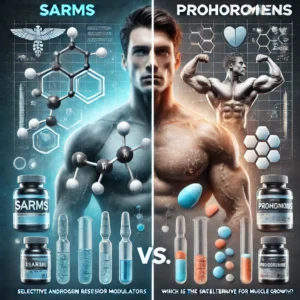SUPPORT Canadian ! Buy steroids , peptides and sarms in Canada | We ship from Canada to Canadians only | No duty - No customs - No cross borders - No risk
SUPPORT Canadian ! Buy steroids , peptides and sarms in Canada | We ship from Canada to Canadians only | No duty - No customs - No cross borders - No risk
- Injectables
- Oral Steroids
- Steroid Stacks – Bulking / Cutting
- Anti Aging
- Acne & Hair Loss
- Anti-Anxiety & Anti-Depressants
- Blood Preasure & Cholesterol
- Diuretic
- Estrogren & Prolactin
- Muscle Relaxers & Anti-Inflammatories
- Sleep Assistance
- THC
- SARMs
- Anti-Biotics/Misc
- PCT / HCG / HMG – Post Cycle Therapy
- Premium Peptides To Buy Online
- TRT
- Sexual Aids
- Weight Loss FAT BURNERS
- Pfizer Genotropin HGH 36IU
- Ozempic Pens
- Nootropics / Smart drugs
- Human Growth Hormone HGH
- Syringes/Needles and Bacterial Water
- Liver Support & Acid Reflux
- Nicotine Pouches
The Science of Protein Timing: How to Optimize Muscle Growth and Recover
CS Depot
Unlocking Muscle Growth: Understanding Your Protein Needs
Protein is the cornerstone of muscle growth, repair, and overall fitness. But how much do you really need to fuel your body effectively? Whether your goal is to build muscle, lose weight, or recover from injury, understanding protein intake is a game-changer. Let’s break it down step by step, so you can confidently hit your targets and see real results.
How Much Protein Should You Be Eating?
Your daily protein needs depend on factors like weight, age, activity level, and fitness goals. Here’s the breakdown:
- Sedentary Individuals: The National Institutes of Health (NIH) recommends a minimum of 0.36 grams of protein per pound of body weight per day.
- Active Lifestyles: For those hitting the gym, engaging in intense workouts, or working physically demanding jobs, experts suggest 0.75 to 1.2 grams of protein per pound of body weight.
For example, if you weigh 150 pounds and follow a rigorous fitness routine, aim for 112.5 to 180 grams of protein daily. This range ensures your muscles get the building blocks they need to grow and repair.
High-Protein Food Options
Once you know your daily protein target, it’s time to make smart food choices. Protein-rich foods should align with your dietary preferences, lifestyle, and budget. Here are some popular options:
Animal-Based Sources
- Chicken breast, turkey, lean beef
- Fish (salmon, tuna, cod)
- Eggs and dairy (Greek yogurt, cottage cheese, milk)
Plant-Based Sources
- Lentils, chickpeas, and black beans
- Tofu, tempeh, and edamame
- Quinoa, chia seeds, and hemp seeds
Convenient Protein Boosters
- Protein powders (whey, casein, or plant-based)
- High-protein snacks like nuts, jerky, or protein bars
Tips for Meeting Your Protein Goals
Hitting your protein target doesn’t have to be complicated. Use these practical tips to ensure consistent intake:
- Distribute Protein Throughout the Day
Aim for 20-40 grams of protein per meal to maximize absorption and maintain muscle repair throughout the day. - Combine Proteins for Vegetarians
Pair foods like rice and beans, or hummus and whole-grain bread, to create complete proteins with all essential amino acids. - Use Protein Shakes Strategically
A post-workout shake with 20-40 grams of protein can aid muscle recovery and boost your daily intake. - Prep Smart Snacks
Keep high-protein options on hand, like hard-boiled eggs, string cheese, or a smoothie with added protein powder.
How to Calculate Protein in Your Meals
Tracking your protein intake becomes easier with tools and techniques:
- Food Labels: Check protein content per serving on packaging.
- Portion Measurement: Use a food scale to weigh portions accurately.
- Nutrition Apps: Platforms like MyFitnessPal simplify tracking and meal planning.
At first, measuring portions might seem tedious, but after a few weeks, you’ll be able to estimate protein content by sight.
Why Protein Timing Matters
Distributing protein evenly across your day helps optimize muscle protein synthesis (MPS). This process is key to repairing and building muscle tissue. Skipping meals or consuming all your protein at once can hinder progress.
Instead, aim to space meals 3-4 hours apart, focusing on quality sources in each meal. Post-workout nutrition, in particular, plays a crucial role in recovery and growth.
Take Charge of Your Fitness Journey
Understanding your protein needs isn’t just about numbers; it’s about empowering yourself to make informed decisions. Start by calculating your target, incorporating diverse food sources, and building a sustainable plan. With a little effort and consistency, you’ll be well on your way to unlocking your full potential.
Quick Recap:
- Protein supports muscle growth, weight loss, and recovery.
- Sedentary individuals need 0.36 g/lb of protein daily, while active individuals may need up to 1.2 g/lb.
- Incorporate high-protein foods and spread intake across 3-4 meals.
- Use tools like food scales and apps to track progress.
Your body thrives on what you feed it—so make every bite count!


